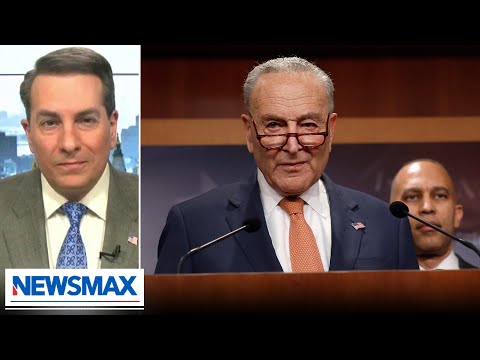In a significant legal setback for Democrats, 14 attorneys general found themselves on the losing side of a court ruling that upheld President Trump’s authority to reorganize federal agencies. The court decided that the President indeed could pursue measures aimed at reducing waste, fraud, and abuse—actions that do not require congressional approval. This ruling sent shockwaves through the Democratic ranks, who argued their case without any concrete evidence of harm. It’s almost as if the Democrats threw a dart at a board labeled “Reasons to Oppose Trump” and missed completely.
But why all the fuss from the left? It seems that the Democrats’ most steadfast allies are public employee unions, which many believe are draining the nation’s resources. Public employees, on average, earn more than their private sector counterparts and receive generous benefits—think of them as resembling those luxurious sedans that are constantly being washed and polished but rarely driven. They are often viewed as immune from accountability, and that’s a sweet deal when taxpayer money is involved. As the wind whips around government buildings, the cries from Congress Members like Chuck Schumer and Alexandria Ocasio-Cortez escalate, revealing a desperate bid to maintain their hold on this constituency.
The bumpy ride for Democrats is not solely about protecting their cherished unions but also about maintaining the federal funding gravy train that flows into certain states. Many of these states carry the heaviest burdens of public debt and economic challenges while relying on generous welfare programs. They fear that as Trump’s reforms take root, the sweet flow of federal dollars might dry up, leaving their coffers—and budgets—gasping for air. The reality is that cutting down on federal spending is not just a partisan issue; it’s a matter of states regaining the control and resources to manage their expenditures without leaning on Washington’s guiding hand.
Historically, the federal government was never intended to be a financial crutch for states unwilling or unable to balance their books. The writers of the Constitution envisioned a nation in which the states operated with a certain degree of autonomy. The rampant growth of federal power over the last century has led to a stifling dependence that would make even the most entrenched social media influencer blush. As the federal budget balloons and government programs multiply, accountability wanes, and we find ourselves caught in a cycle of inefficiency that affects us all.
As the court’s decision reverberates through the political landscape, it raises questions about the very structure of governance in America. The Executive Branch is, after all, led by the President, who has the legal right to manage appointments and make changes as needed. The enormous federal workforce, now stretching to nearly two million civilians and countless contractors, is ripe for scrutiny. Why should any of them feel entitled to a government job, especially when taxpayers are footing the bill? If federal employees find themselves in the crosshairs of budget cuts, it’s merely the unfortunate result of economic realities.
The winds of change are strong, and as the dust settles, the country may find itself at a crossroads. The challenge now lies in ensuring that the executive branch retains its authority without being hampered by an ever-expanding bureaucracy. If the founders could peer into today’s political climate, they might react with disbelief at how the unelected administrative state has gained so much power. The stakes are high: without a return to a more constitutional approach to governance, American democracy itself could be in peril. As the saying goes, if you can’t control spending, then who needs elections anyway?



